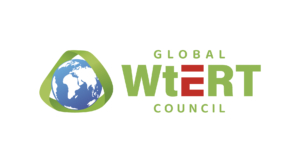M.S. Thesis: A Study of the Waste-To-Energy Industry in Beijing City
By Lu Li
Advisors: Prof. A.C. (Thanos) Bourtsalas and Prof. Nickolas J. Themelis
Department of Earth and Environmental Engineering
Fu Foundation School of Engineering & Applied Science
Columbia University
December, 2019
Beijing’s population currently sits at approximately 22 million people, and these residents created over nine million tons of domestic garbage in 2017. Population growth and rapid economic development have resulted in a rapid increase in municipal solid waste (MSW) production in Beijing City. According to the National Municipal Bureau of Statistics, waste generation in Beijing increased from 4.5 million tons in 2005 to 9.2 million tons in 2017.1 As a result of the “garbage siege” dilemma, the city government has realized that the disposal of garbage is a problem that must be urgently resolved.
The waste treatment procedures commonly used in Beijing include landfill, composting and wasteto-energy (WTE). In 2017, landfill, as the main waste treatment method in the city, accounted for 47% of total waste disposal; and waste-to-energy and composting comprised 35% and 17% respectively.2 In recent years, with the growing pressures of land scarcity and rapid waste growth, the local government has focused on improving WTE technology and has provided significant financial support to the industry. Since 2008, ten waste-to-energy plants have been built and launched, with a total designed capacity of 13,650 tons/day.
This study focuses on the WTE industry in Beijing and discusses the MSW management and the development of the WTE industry in Beijing from the perspective of the circular economy. The quantity of waste-to-energy plants has increased significantly over the last ten years and will continue to grow in the near future; the gap between the current total designed capacity of waste disposal facilities and the actual MSW generation in Beijing could be abridged by the construction of additional waste-to-energy plants. Waste-to-energy has been given priority as a form of waste management and will play a more critical role than landfills in Beijing’s MSW management over the next few years. Although the WTE industry offers a potential solution to the crisis, it also suffers from issues such as toxic pollutants, high social costs, and opposition from the public. The government needs to be more responsible for supervising the management and operation of waste-to-energy plants to counteract these issues. This paper suggests that waste reduction and utilization are expected to be the final strategies for waste management in Beijing, and that promoting effective waste sorting at source is an essential task for the city government.
